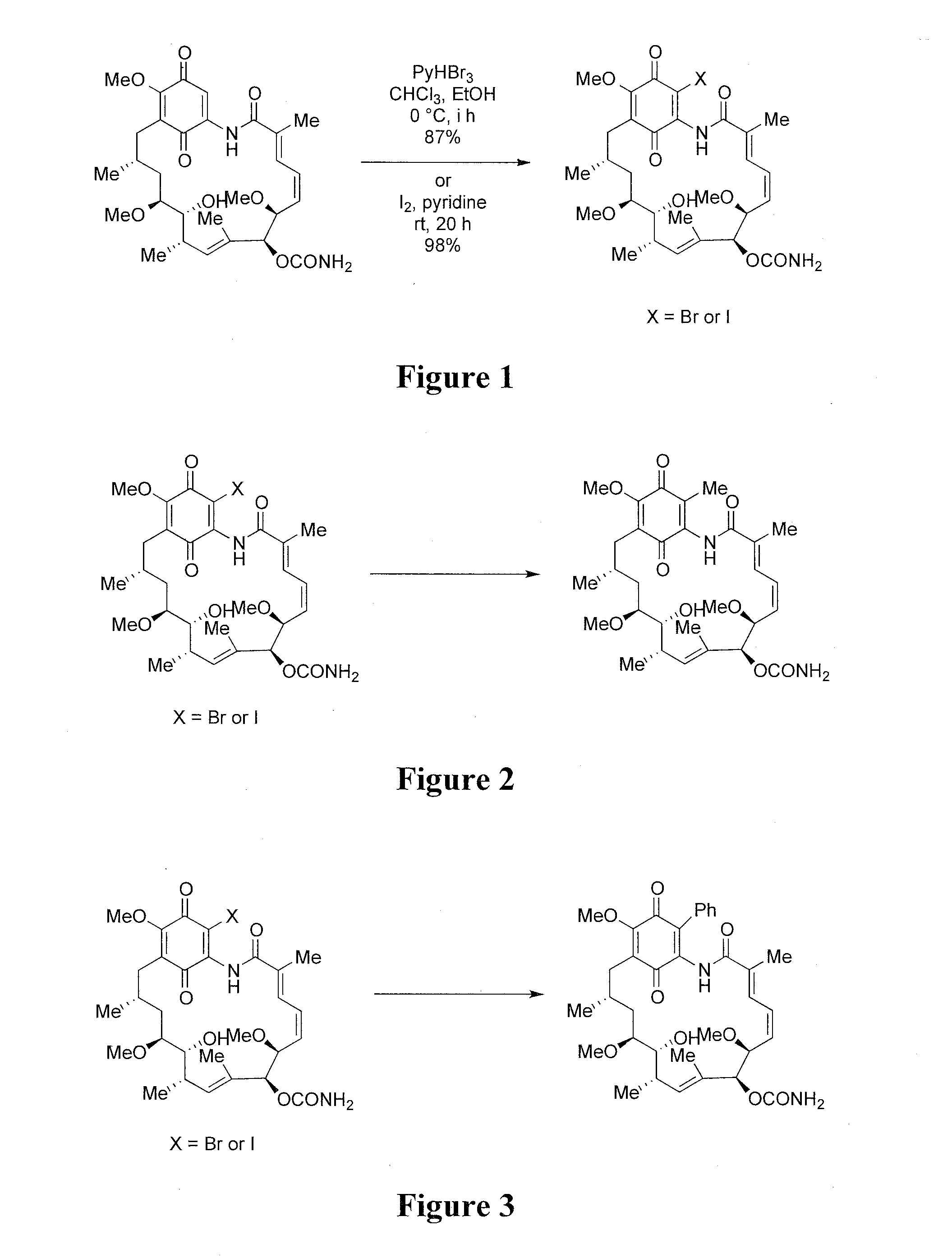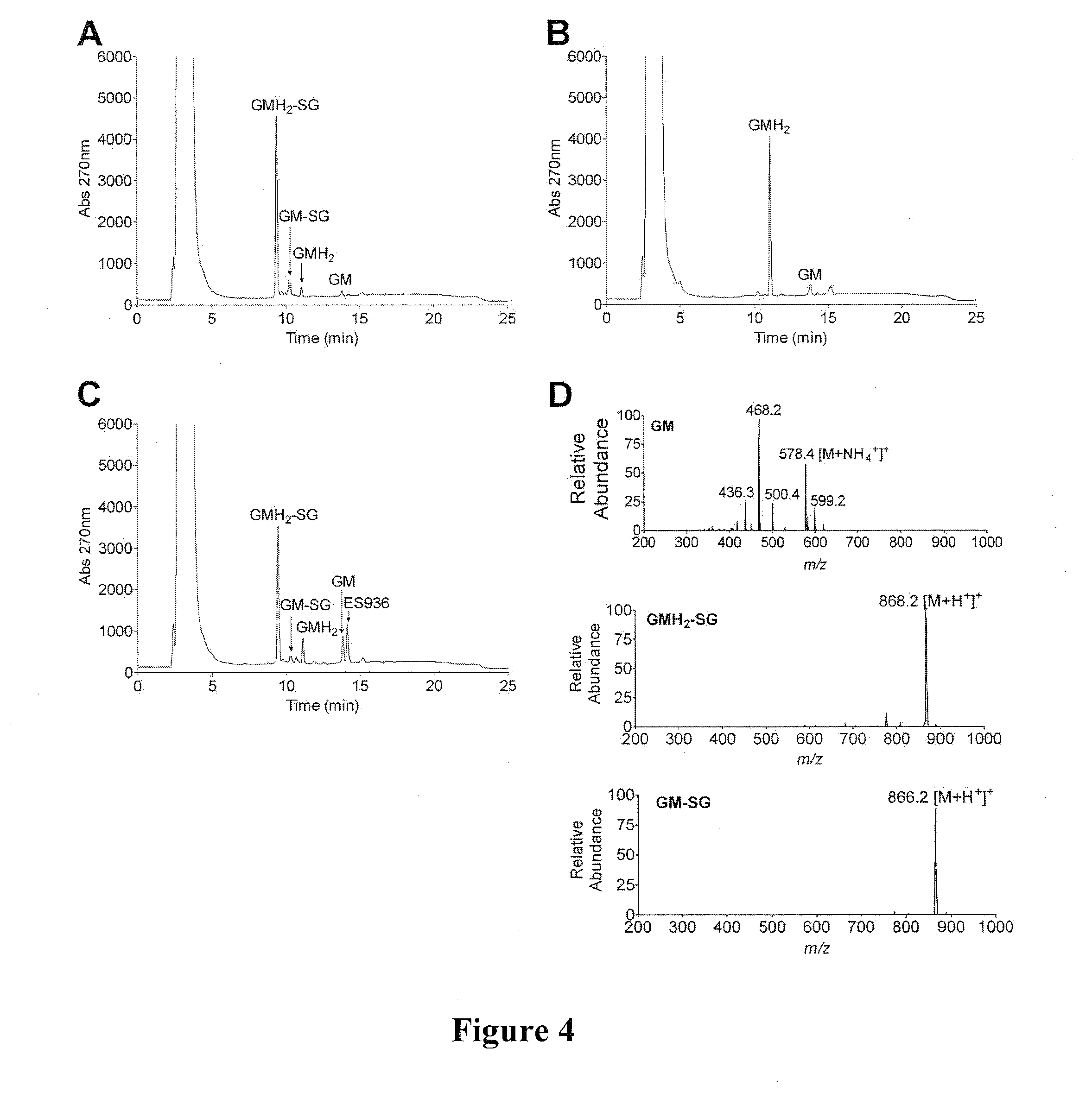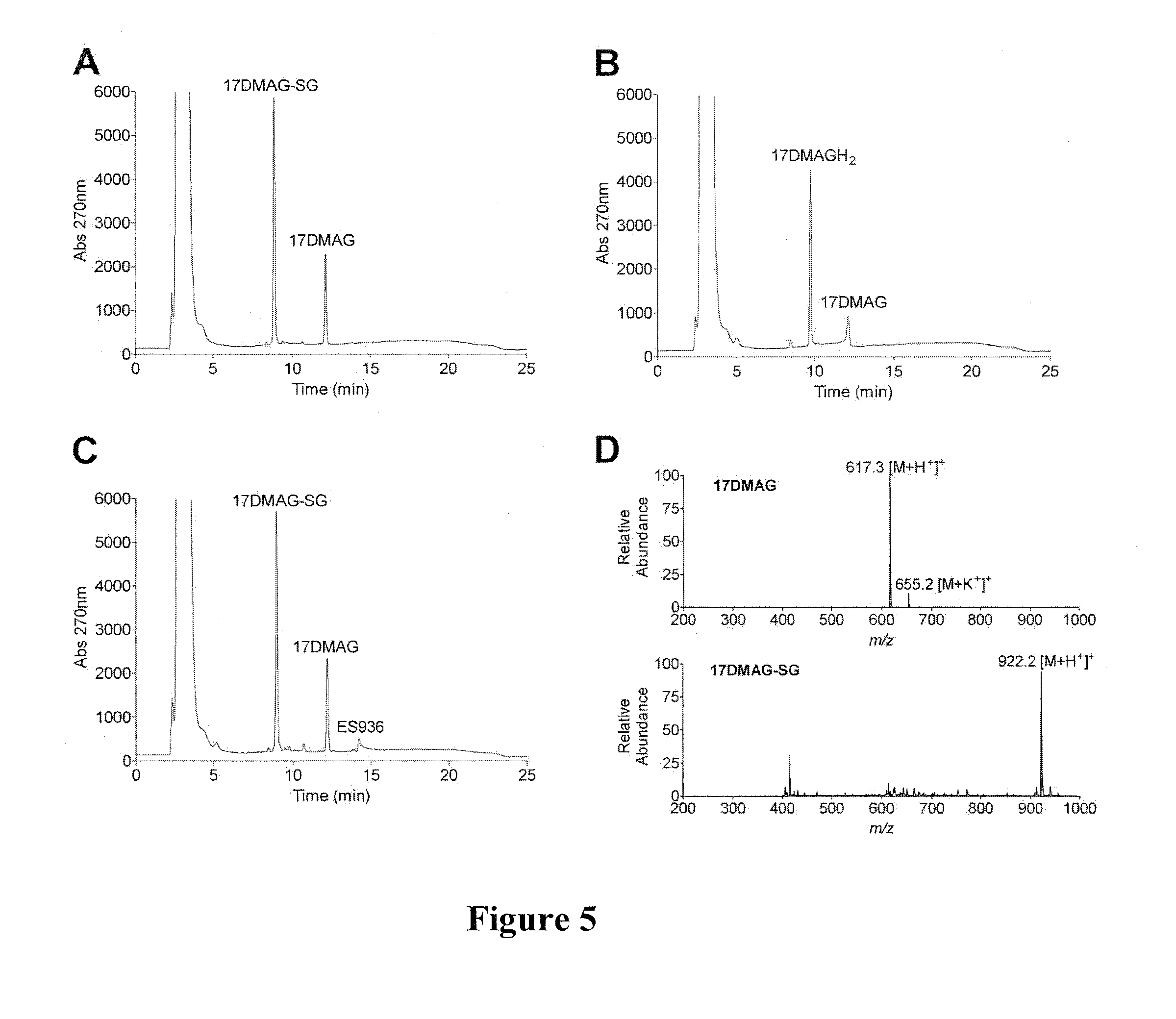Hsp90 inhibitors with modified toxicity
a technology of hsp90 inhibitors and modified toxicity, which is applied in the field of geldanamycin derivatives, can solve the problems of withdrawal from phase i clinical trials, observed toxicity of these compounds, and glutathione depletion, and achieve the effect of preventing or reducing the autoxidation of hydroquinon
- Summary
- Abstract
- Description
- Claims
- Application Information
AI Technical Summary
Benefits of technology
Problems solved by technology
Method used
Image
Examples
example 1
Formation of a 19-Substituted Geldanamycin
[0168]19-Bromo or 19-iodo geldanamycin analogues were readily synthesized from commercially available geldanamycin by electrophilic bromination with pyridium perbromide or with iodine as shown in FIG. 1.
example 2
Formation of a 19-Substituted Geldanamycin
[0169]Two synthetic approaches can be utilized for the synthesis of 19-methyl substituted geldanamycin derivatives: a conjugate addition—elimination strategy, and a palladium mediated cross coupling strategy. Referring to FIGS. 2 and 3, both approaches start with the readily available 19-BrGA or 19-I-GA.
[0170]The cross coupling strategy utilizes the Pd(PPh3)4 reagent (or alternative Pd catalysts) in the presence of appropriate ligands, and of CuX (where X is a halogen) and Me4Sn, n-Bu3SnPh or other stannanes.
example 3
Toxicity of Benzoquinone Ansamycins Interaction of BA Hsp90 Inhibitors with Reduced Glutathione
[0171]Benzoquinone ansamycins (BAs) can interact with glutathione, and these reactions have been associated with hepatotoxicity. Using a series of BAs, the ability of BAs to undergo conjugation with glutathione, was investigated. The BAs used were: geldanamycin (GM), 17-(allylamino)-17-demethoxygeldanamycin (17-AAG), 17-demethoxy-17-[[2-(dimethyl amino)ethyl]amino]-geldanamycin (17-DMAG), 17-(amino)-17-demethoxygeldanamycin (17-AG), and 17-demethoxy-17-[[2-(pyrrolidin-1-yl)ethyl]amino]-geldanamycin.
[0172]The interaction of BAs, including GM, 17-DMAG, 17-AAG, 17-AG, and 17AEP-GA, with glutathione was measured by HPLC and further confirmed by LC-MS (FIGS. 4 and 5). Reaction conditions were: 50 μM BA and 5 mM GSH were incubated in 50 mM potassium phosphate buffer, pH 7.4 (1 ml) at room temperature in the absence and presence of 11.8 μg of rhNQO1 and 500 μM NADH. BA-GSH conjugate formation was...
PUM
 Login to View More
Login to View More Abstract
Description
Claims
Application Information
 Login to View More
Login to View More - R&D
- Intellectual Property
- Life Sciences
- Materials
- Tech Scout
- Unparalleled Data Quality
- Higher Quality Content
- 60% Fewer Hallucinations
Browse by: Latest US Patents, China's latest patents, Technical Efficacy Thesaurus, Application Domain, Technology Topic, Popular Technical Reports.
© 2025 PatSnap. All rights reserved.Legal|Privacy policy|Modern Slavery Act Transparency Statement|Sitemap|About US| Contact US: help@patsnap.com



